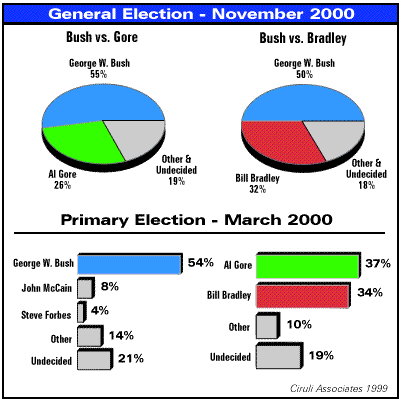After a two-decade wait, Colorado will finally gain a seventh Congressional seat. In doing so, Colorado joins mountain and sunbelt states, Montana, Nevada, Florida and Georgia, in gaining a seat. Arizona and Texas are likely to pick up two seats each.
Since gaining its sixth Congressional seat nearly two decades ago, Colorado’s boundaries have shifted very little. However, squeezing a seventh seat into the south suburban metro area (primarily Arapahoe, Douglas and south Jefferson counties) is likely to cause ripples throughout the state's remaining districts.
Redistricting battles could be heated as Colorado politicians have a history of protecting incumbents while drawing new Congressional lines. The western slope could finally become its own seat by detaching itself from Pueblo and forcing Pueblo to join with El Paso County. Boulder could become less dominant in a redesigned 2nd Congressional District that picks up voters to the north or east. And Denver will now require substantial suburban voters to fill out its seat of more than 600,000 voters.
Colorado last gained a seat in 1982. Astronaut Jack Swigert was elected, but died before taking office. Republican Dan Schaefer then won the seat in a special March 1983 election.
Western Primary Down to Three States
Western governors' efforts to bring eight Rocky Mountain states together for a March 10 primary was reduced to three states: Colorado, Utah and Wyoming. The remaining Western states' primaries and caucuses were scattered around the 2000 primary calendar, beginning with Arizona Republicans on February 22 and ending with primaries in Montana and New Mexico on the last primary day, June 6.
the Western States
2000 Presidential Delegate Selection
Dates and Procedures
|
| Date |
State |
Type |
| February 7 |
Hawaii |
Republican Caucus/Convention |
| February 22 |
Arizona |
Republican Primary |
| February 29 |
Washington |
Primary |
| March 7 |
California |
Primary |
| March 7 |
Hawaii |
Democrat Caucus/Convention |
| March 7 |
Idaho |
Democrat Caucus |
| March 10 |
Colorado |
Primary |
| March 10 |
Utah |
Primary |
| March 10 |
Wyoming |
Caucus/Convention |
| March 11 |
Arizona |
Democrat Primary |
| May 16 |
Oregon |
Primary (Mail-in) |
| May 19 |
Alaska |
Republican Caucus/Convention |
| May 19 |
Nevada |
Democrat Caucus/Convention |
| May 20 |
Alaska |
Democrat Caucus/Convention |
| May 23 |
Idaho |
Primary |
| May 25 |
Nevada |
Republican Caucus/Convention |
| June 6 |
Montana |
Primary |
| June 6 |
New Mexico |
Primary |
| Ciruli Associates 1999 |
The season started with Republican caucuses in Louisiana on January 22, Iowa caucuses on January 24 and the New Hampshire primary on February 1.
Presidential Primary
Turnout 1992 and 1996
|
|
Democrat |
Republican |
|
Number |
% Turnout |
Number |
% Turnout |
| 1992 |
239,643 |
44% |
195,690 |
33% |
| 1996 |
56,578 |
8% |
250,733 |
34% |
| Ciruli Associates 1999 |
Colorado Turnout Often Low
Colorado adopted a presidential primary in 1992. Less than half the state's registered partisan voters usually turn out (the Democrat primary in 1992 was strongly contested and received considerable media coverage, including a televised debate). President Bush's renomination battle with Pat Buchanan in 1992 attracted only 195,000 Republicans.
The Republican race in 1996 was an open contest that brought out 250,733 Republicans. But only 56,578 Democrats showed up, mostly to support incumbent Bill Clinton in his nearly uncontested primary.
Early Polls
Most Colorado voters support Texas Gov. George W. Bush for president in the November 2000 election. An October 1999 statewide poll conducted by Ciruli Associates for 9 KUSA, KOA Radio and the Denver Post, shows Bush defeating either Vice President Al Gore or former New Jersey Sen. Bill Bradley, although Bradley runs 11 percentage points better than Gore. Bradley draws more Republican and independent voters than Gore in his contest with Bush. When Pat Buchanan is added to the contest between Bush and Gore, he only draws 5 percent of the vote, substantially less than Perot in 1992 and 1996. Buchanan's votes come equally from Bush and Gore.

While Bush dominates the Republican field, with Arizona Sen. John McCain in a distant second, Democrat Al Gore is in a tough fight with his primary opponent Bill Bradley. Colorado is a major challenge for Democrats. Except for Bill Clinton's surprise win in 1992, no Democrat has won the state since Lyndon Johnson in 1964.
Presidential Primary Results
Leading Candidates
|
| March 3, 1992 |
| Democrat |
Republican |
| Brown |
29% |
Bush |
68% |
| Clinton |
27% |
Buchanan |
30% |
| Tsongas |
26% |
|
|
| March 5, 1996 |
| Democrat |
Republican |
| Clinton |
89% |
Clinton |
43% |
|
|
Buchanan |
22% |
|
|
Forbes |
21% |
| Ciruli Associates 1999 |
Past Primary Winners
Jerry Brown surprised local Democrats and national observers by winning the 1992 Democratic primary, one of only two primary victories in his national effort. Key to his victory was attracting independent and unregistered young voters, who were able to register as Democrats at the polling place on the day of the election. Clinton continued his comeback after the Jennifer Flowers and draft evasion controversies dropped him into second place in New Hampshire. Clinton remained second in Colorado, pushing Tsongas, who was angling to win, to a close third.
Although Colorado Republican voters give challengers some votes, the establishment front-runner candidates dominate presidential primaries (Bush in 1992 and Dole in 1996).
[top][archives][home] [send this page to a friend]
|